Download
- Download Amanda enterprise edition with Zmanda Management Console.
- Amanda enterprise edition with ZMC packages are available in the Zmanda network downloads page.
- Amanda enterprise edition with ZMC package contains Amanda enterprise server, Amanda enterprise client, Zmanda Management Console and dependencies for Redhat Enterprise Linux distribution and Suse Linux Enterprise distributions.
- Amanda enterprise edition with ZMC is supported on RHEL3, RHEL4, SLES9 and SLES10 platforms.
- CentOS 3 and 4 distributions can use Redhat Enterprise 3 and 4 platforms respectively.
- There is one common binary for all these platforms
- Amanda enterprise edition with ZMC is installed on the backup server and it supports Amanda enterprise 2.6 and 2.5.1 Update 1 clients.
- For all other distributions and Amanda clients, download rpm packages or client packages from the Zmanda network downloads page.
Pre-installation tasks
Amanda Rapid Installer
ZMC is installed by the Amanda Rapid Installer. This installer needs to be run on the system which will be the Amanda server. The installer will install the Amanda server, client and ZMC.
- The Installer requires that the server has a minimum of 100 MB free space
- The Amanda Rapid Installer is a X based application. So, a user either needs a monitor attached to the system on which the user is installing or the user needs to enable remote display of X applications from that server to the desktop.
- Note: Once ZMC is installed via the Amanda Rapid Installer, a user needs only a browser to connect to the Amanda server to access ZMC. ZMC needs the desktop resolution to be set to a minimum of 1024 x 768 or higher.
Begin Installation
1.Copy the Amanda Rapid Installer (a binary file) to the host where a user wants to install ZMC and Amanda server.
2.Login in to the server as superuser.
3.Make sure that the installer binary is executable:
# chmod +x amandaenterprise-2.6-installer.bin
4.Run the installer by double-clicking on it or a user can also invoke it on the command line
# ./amandaenterprise-2.6-installer.bin
6. A GUI based installer will start the process of installation.
7. Please follow the on-screen instructions.
- Note: The installer does several tasks after creating and populating various directories. This is done after its progress bar (which tracks unpacking of the archive) has shown 100% completion.
- Installer package includes Amanda enterprise edition 2.6 server and client for all supported distributions, Zmanda Management Console, MySQL, PHP, Apache, PHPmyadmin, Perl and various perl modules and their dependencies.
- The steps that the Installer follows are given here.
- If users are already familiar with the steps, they can move forward to the next section.
8. If a user wants the installation to proceed in certain other modes, please see section below.
9. The Installer will install Amanda version 2.6 or higher on the system.
- ZMC directories will be installed in the path /opt/zmc
- The Installer will create all the necessary subdirectories automatically.
Installer Steps
- Begin Installation:

- This is an optional page that appears if the distribution is supported by Zmanda Management Console. Please contact [email protected] before choosing a distribution. This page does not appear for distributions supported by Zmanda Management Console.
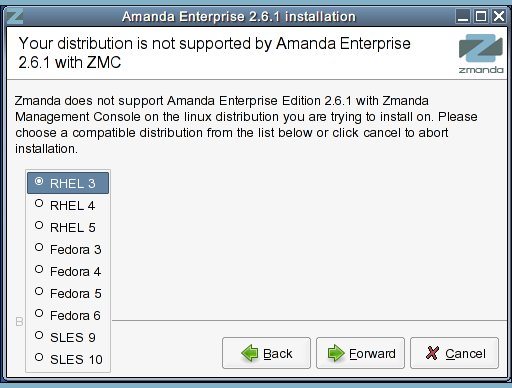
- Choose ZMC web server and MySQL server ports:
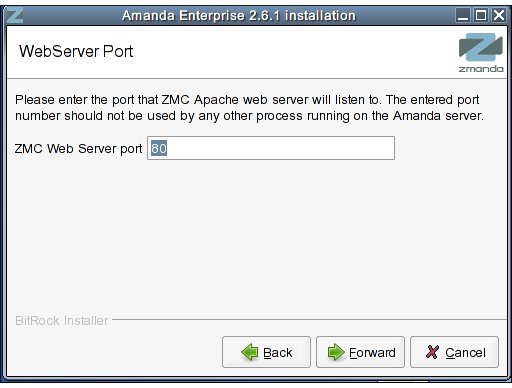
- Creating Directories and Unpacking Software automatically:
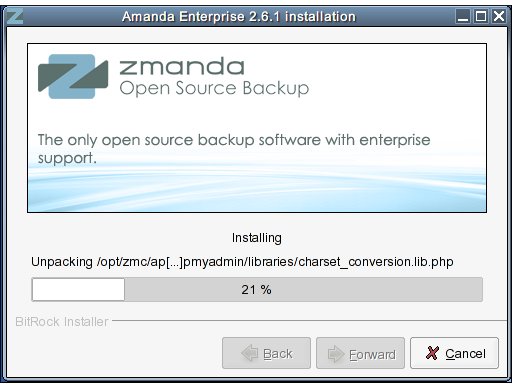
- Continuing Installation:
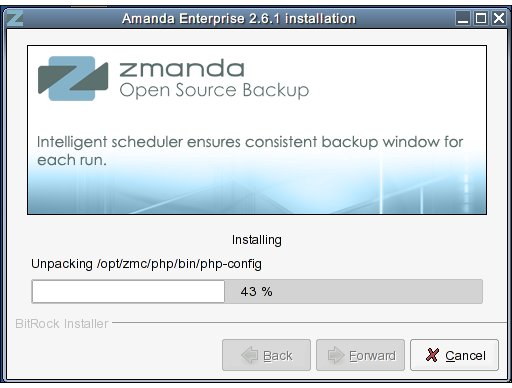
- More:
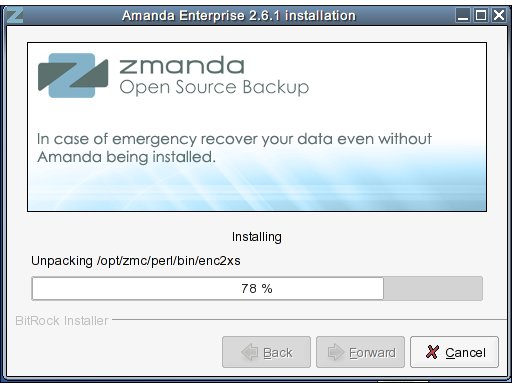
- Create ZMC database :
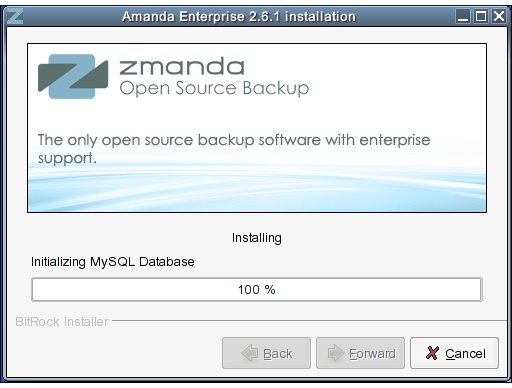
- README file will be displayed. The README file contains the default ZMC user and password. The user has an option to launch Zmanda Management Console in a browser:
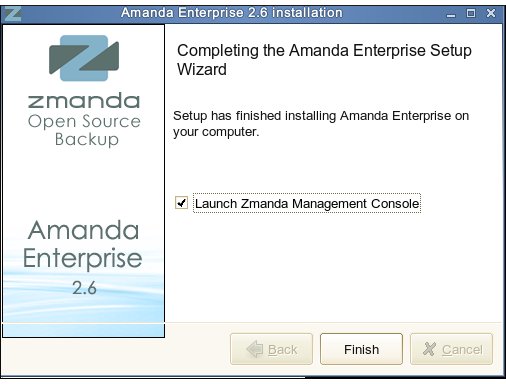
Post Installation
10. On completion of installation:
A: ZMC will be launched.
B: In a separate window the Read Me.txt will display text containing late breaking news.
C: ZMC does not change any previous Amanda Configuration files that exist on that Server.
D: Un-installation is enabled.
While un-installing, the Backup Set Configurations created by a user will be left intact.
When a user re-installs ZMC on a different host, a user can copy them there.
- ZMC has created a user 'amandabackup' on the server.
Alternate Installation Modes
- GTK: This is a native installation mode based on the GTK 2.0 toolkit.
- The GTK libraries must be present in the system (they are installed by default in most Linux distributions).
- This is the default installation mode.
- If the GTK libraries are not available, the X-Window installation mode will be automatically used instead.
- X-Window: This is a self-contained installation mode that has no external dependencies.
- It will be started when the GTK mode is not available.
- It can also be explicitly requested with the --mode xwindow command line switch.
- Unattended Installation: Using the --mode unattended command line option, perform unattended or silent installations
- This is useful for automating installations or for inclusion in shell scripts, as part of larger installation processes.
Additional Command line parameters
- Invoke the installer with the --help command line option to see Additional Command line parameters.
Amanda Enterprise 2.6 Usage:
--help Display the list of valid options --version Display product information --optionfile <optionfile> Installation option file Default: --mode <mode> Installation mode Default: Allowed: gtk xwindow text unattended --debugtrace <debugtrace> Debug filename Default: --apache_port <apache_port> ZMC Web Server port Default: 80 --mysql_port <mysql_port> ZMC MySQL Server port Default: 3306 --mysql_password <mysql_password> ZMC MySQL Server root password Default: --phpmyadminpasswd <phpmyadminpasswd> Password Default:
Examples of Changes in Defaults
- To change the default Apache and MySQL ports during installation, a user would use:
#./amandaenterprise-2.6-installer.bin --mysql_port 3333 --apache_port 8888
NB: Make sure those ports are available, otherwise the installation will fail.
- To change the defaults after the installation:
- For example, if a user wants to change ports:
- - Apache to 8888
- - MySQL to 2222
a user needs to change: - in /opt/zmc/apache2/conf/httpd.conf: Listen 8888 - and in the file zmandactl.sh MYSQL_START="/opt/zmc/mysql/bin/safe_mysqld --port=2222
